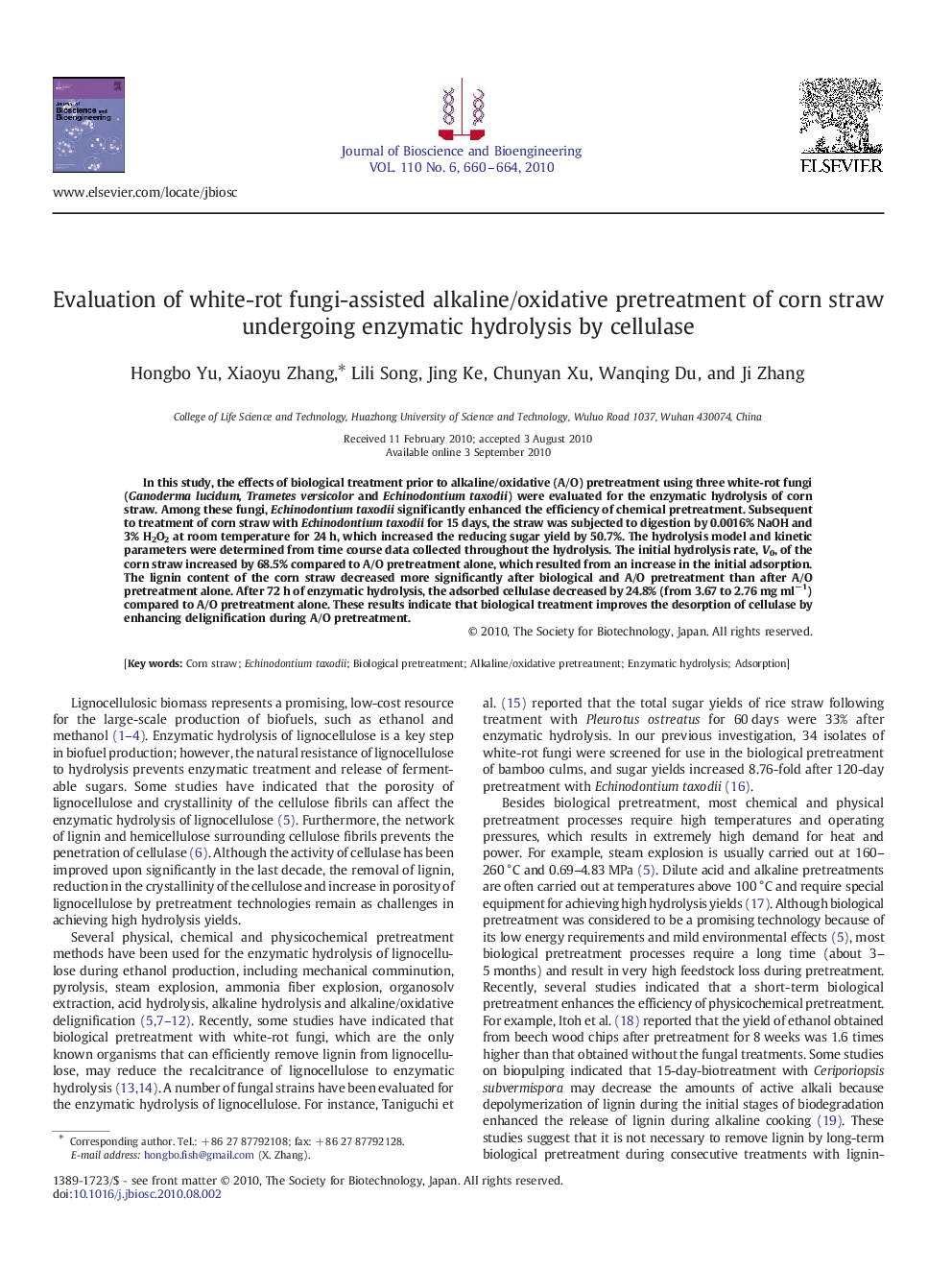| Article ID | Journal | Published Year | Pages | File Type |
|---|---|---|---|---|
| 21707 | Journal of Bioscience and Bioengineering | 2010 | 5 Pages |
In this study, the effects of biological treatment prior to alkaline/oxidative (A/O) pretreatment using three white-rot fungi (Ganoderma lucidum, Trametes versicolor and Echinodontium taxodii) were evaluated for the enzymatic hydrolysis of corn straw. Among these fungi, Echinodontium taxodii significantly enhanced the efficiency of chemical pretreatment. Subsequent to treatment of corn straw with Echinodontium taxodii for 15 days, the straw was subjected to digestion by 0.0016% NaOH and 3% H2O2 at room temperature for 24 h, which increased the reducing sugar yield by 50.7%. The hydrolysis model and kinetic parameters were determined from time course data collected throughout the hydrolysis. The initial hydrolysis rate, V0, of the corn straw increased by 68.5% compared to A/O pretreatment alone, which resulted from an increase in the initial adsorption. The lignin content of the corn straw decreased more significantly after biological and A/O pretreatment than after A/O pretreatment alone. After 72 h of enzymatic hydrolysis, the adsorbed cellulase decreased by 24.8% (from 3.67 to 2.76 mg ml−1) compared to A/O pretreatment alone. These results indicate that biological treatment improves the desorption of cellulase by enhancing delignification during A/O pretreatment.
